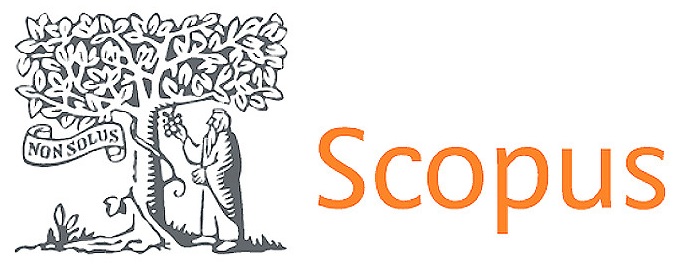The Effects of Collaborative Simulation Education on Patient Safety in Medical Education
DOI:
https://doi.org/10.56294/saludcyt2023457Keywords:
Patient Safety (PS), Emergency Department (ED), Knowledge and AttitudeAbstract
One of the busiest paediatric emergency departments (ED) in the United States is located at Cincinnati Children's Hospital. "High volume, high acuity, and frequent interruptions" all contribute to a higher risk of error. Improving patient safety (PS) in an ED by introducing “multidisciplinary, simulation-based curriculum" that emphasizes teamwork and interaction. The ED's whole staff of medical professionals served as subjects. Teams from several disciplines took part in simulation-based training sessions that addressed teamwork and interaction techniques in pressing clinical situations. Evaluations of "essential simulations, knowledge tests, safety attitudes test, and real performance in the ED resuscitation bay" were conducted. The adoption of routine in situ simulations and the requirement that all new employees complete simulation-based training were strategies used to maintain improvements. The initial session was attended by 291 individuals. On an average of 11,2 months after the initial evaluation, 158 participants showed up. It was clear that knowledge and attitudes had improved over time. In the ED, simulation training is a useful technique for changing attitudes towards safety and cooperative behaviors. Repeated practice opportunities are necessary for social and behavioral modifications to last
References
1. Raty, S.R., Teal, C.R., Nelson, E.A. and Gill, A.C., 2017. Near-peers improve patient safety training in the preclinical curriculum. Medical Education Online, 22(1), p.1289315. https://doi.org/10.1080/10872981.2017.1289315 DOI: https://doi.org/10.1080/10872981.2017.1289315
2. El-Jardali, F. and Fadlallah, R., 2017. A review of national policies and strategies to improve quality of health care and patient safety: a case study from Lebanon and Jordan. BMC Health Services Research, 17(1), pp.1-13. https://doi.org/10.1186/s12913-017-2528-1 DOI: https://doi.org/10.1186/s12913-017-2528-1
3. Seshia, S.S., Bryan Young, G., Makhinson, M., Smith, P.A., Stobart, K. and Croskerry, P., 2018. Gating the holes in the Swiss cheese (part I): Expanding Professor Reason's model for patient safety. Journal of Evaluation in clinical practice, 24(1), pp.187-197. https://doi.org/10.1111/jep.12847 DOI: https://doi.org/10.1111/jep.12847
4. Koerich, C., Erdmann, A.L. and Lanzoni, G.M.D.M., 2020. Professional interaction in management of the triad: Permanent Education in Health, patient safety, and quality. Revista latino-americana de enfermagem, 28. https://doi.org/10.1590/1518-8345.4154.3379 DOI: https://doi.org/10.1590/1518-8345.4154.3379
5. Panagioti, M., Geraghty, K., Johnson, J., Zhou, A., Panagopoulou, E., Chew-Graham, C., Peters, D., Hodkinson, A., Riley, R. and Esmail, A., 2018. Association between physician burnout and patient safety, professionalism, and patient satisfaction: a systematic review and meta-analysis. JAMA internal medicine, 178(10), pp.1317-1331. doi:10.1001/jamainternmed.2018.3713 DOI: https://doi.org/10.1001/jamainternmed.2018.3713
6. Pucher, P.H., Tamblyn, R., Boorman, D., Dixon-Woods, M., Donaldson, L., Draycott, T., Forster, A., Nadkarni, V., Power, C., Sevdalis, N. and Aggarwal, R., 2017. Simulation research to enhance patient safety and outcomes: recommendations of the Simnovate Patient Safety Domain Group. https://doi.org/10.1136/bmjstel-2016-000173 DOI: https://doi.org/10.1136/bmjstel-2016-000173
7. Ock, M., Jo, M.W., Choi, E.Y. and Lee, S.I., 2020. Patient safety incidents reported by the general public in Korea: a cross-sectional study. Journal of Patient Safety, 16(2), pp.e90-e96. DOI: 10.1097/PTS.0000000000000509 DOI: https://doi.org/10.1097/PTS.0000000000000509
8. Suleiman, A.R.M., Amarasinghe, D., Kathuria, P., Vandel, J., Holloway, J., Elkin, K., Walker, P. and Levine, D., 2021. Incorporating patient safety into early undergraduate medical education: Teaching medical students to perform surgical time outs during anatomy. BMJ open quality, 10(1), p.e001229. http://dx.doi.org/10.1136/bmjoq-2020-001229 DOI: https://doi.org/10.1136/bmjoq-2020-001229
9. Ward, M., Ní Shé, É., De Brún, A., Korpos, C., Hamza, M., Burke, E., Duffy, A., Egan, K., Geary, U., Holland, C. and O'Grady, J., 2019. The co-design, implementation, and evaluation of a serious board game 'PlayDecide patient safety, to educate junior doctors about patient safety and the importance of reporting safety concerns. BMC medical education, 19(1), pp.1-14. https://doi.org/10.1186/s12909-019-1655-2 DOI: https://doi.org/10.1186/s12909-019-1655-2
10. Huda, N., Faden, L. and Goldszmidt, M., 2017. Entrustment of the on-call senior medical resident role: implications for patient safety and collective care. BMC Medical Education, 17(1), pp.1-9. https://doi.org/10.1186/s12909-017-0959-3 DOI: https://doi.org/10.1186/s12909-017-0959-3
11. Oates, K., Wilson, I., Hu, W., Walker, B., Nagle, A. and Wiley, J., 2018. Changing medical student attitudes to patient safety: a multicentre study. BMC Medical Education, 18, pp.1-7. https://doi.org/10.1186/s12909-018-1313-0 DOI: https://doi.org/10.1186/s12909-018-1313-0
12. Hester, R.L., Pruett, W., Clemmer, J. and Ruckdeschel, A., 2019. Simulation of integrative physiology for medical education. Morphologie, 103(343), pp.187-193. https://doi.org/10.1016/j.morpho.2019.09.004 DOI: https://doi.org/10.1016/j.morpho.2019.09.004
13. Pelzang, R. and Hutchinson, A.M., 2018. Patient safety issues and concerns in Bhutan's healthcare system: a qualitative exploratory, descriptive study. BMJ open, 8(7), p.e022788. doi:10.1136/ bmjopen-2018-022788 DOI: https://doi.org/10.1136/bmjopen-2018-022788
14. Bayram, S.B. and Caliskan, N., 2020. The use of virtual reality simulations in nursing education and patient safety. In Contemporary Topics in Patient Safety-Volume 1. IntechOpen. DOI: 10.5772/intechopen.94108 DOI: https://doi.org/10.5772/intechopen.94108
15. Lee, S.E., Morse, B.L. and Kim, N.W., 2022. Patient safety educational interventions: A systematic review with recommendations for nurse educators. Nursing Open, 9(4), pp.1967-1979. https://doi.org/10.1016/j.nedt.2023.105824 DOI: https://doi.org/10.1002/nop2.955
Published
Issue
Section
License
Copyright (c) 2023 Upendra Sharma Udayashankar Sulibele, Satish Prajapati, Meena Desai (Author)

This work is licensed under a Creative Commons Attribution 4.0 International License.
The article is distributed under the Creative Commons Attribution 4.0 License. Unless otherwise stated, associated published material is distributed under the same licence.



